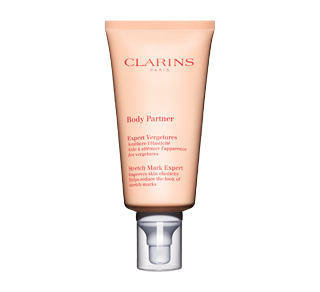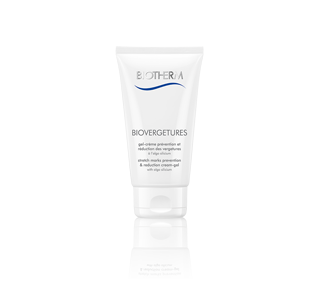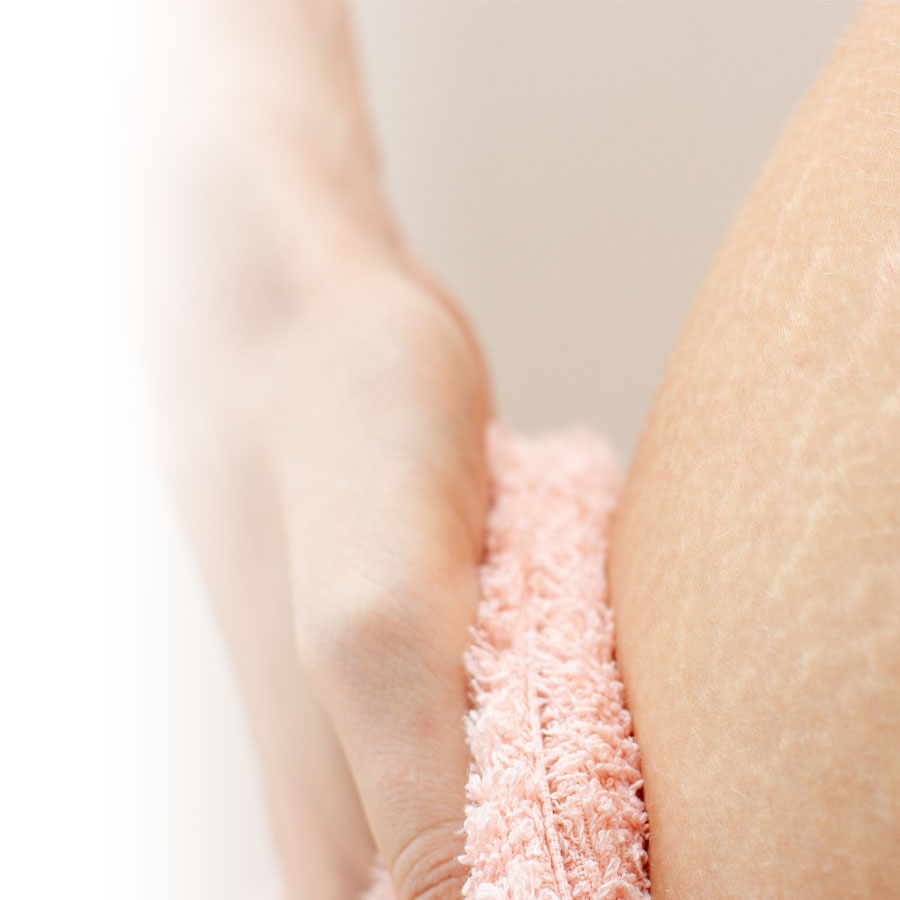About 80% of women and 15% of men will experience stretch marks. Why do they happen? And what can be done to relieve the discomfort they cause? Here’s a quick look at the questions and some answers!
What are stretch marks?
Stretch marks are fine lines that can look like welts or rivulets. They appear when the skin suddenly stretches beyond its elastic capacity. In other words, when the collagen and elastin fibers that provide suppleness finally break down. Stretch marks are related to inflammation, so they first appear a red or purplish colour. Then, after a while, they turn white and become paler than your skin.

Where do stretch marks occur?
In women, they generally occur on the tummy, breasts, thighs and buttocks.
In men, they usually happen around the pectoral muscles, hips, back and thighs.
What causes them?
Several factors come into play…
- Hormonal changes. During certain periods in life, like puberty or pregnancy, our bodies secrete more cortisol, a hormone that can decrease production of collagen. As a result, skin elasticity decreases, and our skin can’t accommodate changes in our body as well.
- Some people are born with thinner skin, which contains fewer collagen and elastin fibers, so stretching of the skin occurs more easily and the marks it leaves are often more apparent.
- Changes in body shape. Rapid weight gain or loss, rapid expansion of muscle mass… These changes and others have an effect on the structure of the skin, causing the fibres to become stretched or distended, sometimes in very pronounced ways.
What can be done to treat stretch marks?
Stretch marks are generally harmless and painless. However, they can cause itching or inflammation, and some people are embarrassed or troubled by the way they look.
To help deal with these issues, it’s important to choose products that soothe the skin while increasing its flexibility and resistance. Check the labels for ingredients like vitamin E, fruit acids, shea butter, sweet almond oil and, naturally, collagen.

Proper use of the care products…
It all depends on your goals.
- To prevent stretch marks—during pregnancy, for example—apply a nourishing product once or twice daily to the areas where your skin is most at risk (see above).
- To reduce their appearance, choose an intensive-treatment regimen, one that lasts for at least eight weeks, where you’ll be applying a healing formula daily, morning and night.
Whatever your goals, apply the products by massaging them into your skin in circular movements. You might also want to try palpating the skin lightly, to encourage absorption of the products.



